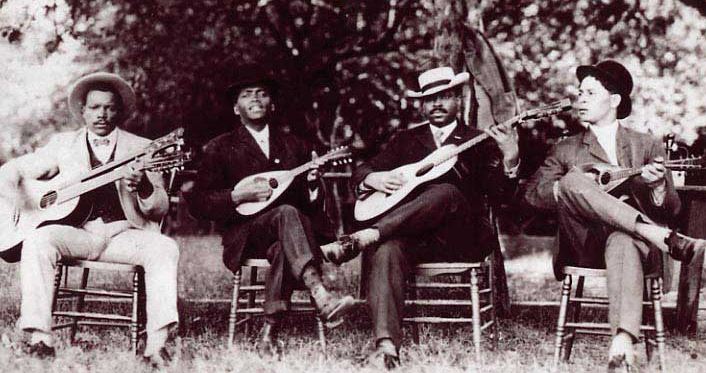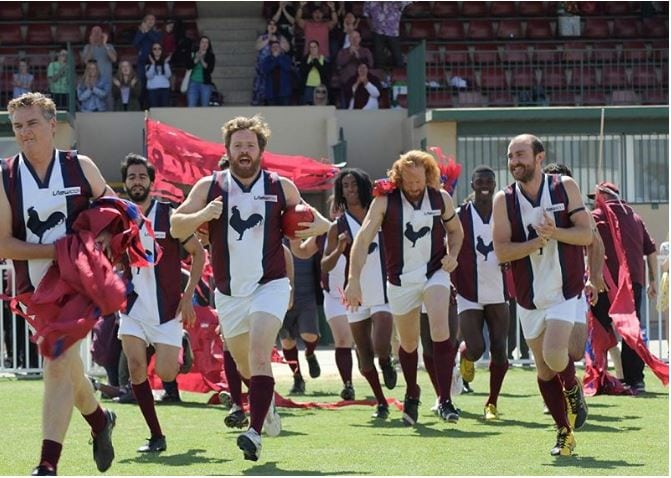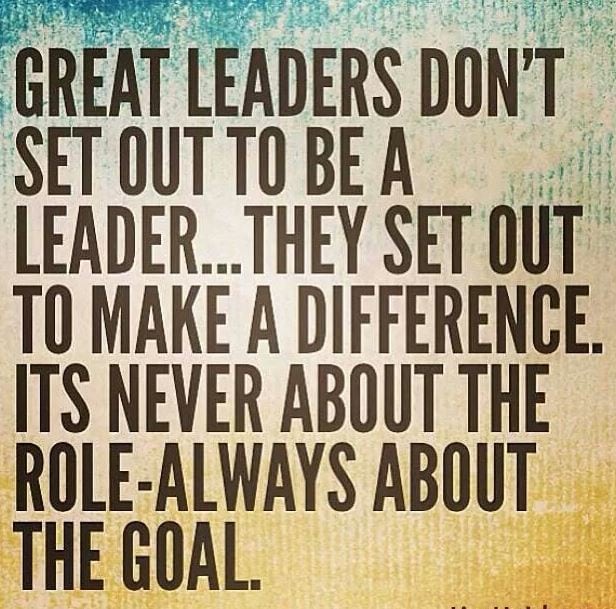
Blues Music in Movies
October 9, 2018
The Politics of Scott Morrison and Prosperity Theology
October 9, 2018Addressing racism through sport in an Australian country town is a very tricky space. Racism in sport at the highest level is also a complex and challenging domain.
In the tradition of The Castle, Damian Callinan adapts his stage play The Merger into a light-hearted movie with a message format. A struggling town, the drought that won’t let up, jobs are scarce after the mill was shut down, and the footy team looks like it will have to merge with a rival club or die.
Living as a recluse on the town’s fringe, former football star turned ‘Town Killer’ Troy Carrington (Callinan), is coaxed into rescuing the team after striking up an unlikely friendship with a boy who tells it like it is and is struggling with the loss of his father. Teaming up with the boy’s mother who runs a nearby refugee support centre, they unite to recruit the new arrivals to save the team. But for some, like the lad’s grandfather and Club President, Bull (John Howard) and a ‘star’ player (Angus McLaren, Hotel Mumbai), it’s more change than they’re willing to take.
Sean Gorman’s non fiction work* outlines some of the issues at play in local country footy teams and communities. This film like Gorman’s work demonstrates how Aussie Rules footy can seemingly challenge barriers of race, money and class in a positive way. The well off in a community can take a shine to a young star. The establishment and the outsider. However, the norms, rules and boundaries in long settled communities are well established and rarely broken; particularly when it comes to relations between colonial settlers and First Peoples.
The seemingly positive relations established through footy (even people playing on the same team) do not necessarily translate into real change in power structures and relationships off the field. I am not suggesting everyone who meets through footy need to be lifelong mates; however, I think, more often than not, they fail to break through the deeply entrenched and powerful divisions that are in place and at play.
Interestingly, the film did not touch on First People’s and community, rather it was framed in relation to refugee/asylum seekers and the community. While it raises confronting issues in a relatively non-threatening way; the film has a level of idealistic happy endingness, rather than the starkness of reality.
* Gorman’s volume Brotherboys is a powerful account of two brothers who went from playing footy in a small country town to starring at the highest level. It highlights the ups and downs of that career and life afterwards; however, it should not be dismissed as just a book about sport. It is also a story of how our sport obsessed nation treated these Indigenous brothers. Gorman’s comprehensive research is obvious as is his understanding of the dynamics of racial subjugation in rural towns and how it develops in footy clubs both small and large. His analysis of racism in sport gives a clear indication of the types of pressures Indigenous players were under both on and off the field. A lot has changed in football since that time with footy now having strong rules on racial vilification and abuse. However is that normative, or perhaps leading the way? A young Indigenous footballer playing at the highest level recently said that he is never racially abused on the footy field, but it happens every day of his life off the field.



